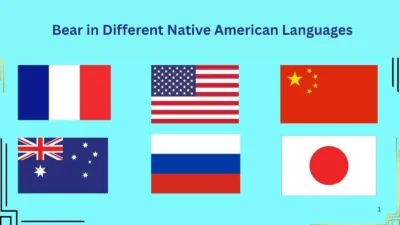Why Are People Searching for “Number 1 in Different Languages”
In today’s interconnected world, knowing how to say “number 1” in different languages can be surprisingly useful. Whether you’re a language learner, traveler, teacher, businessperson, or simply curious, this small word carries powerful meaning across cultures.
People often search for this phrase to understand global counting systems, label content (like “#1” songs or brands), or use it for translations in multilingual communication.
If you’ve landed here, chances are you’re looking for accurate translations and how to use number 1 properly in various languages. You’re in the right place—this guide breaks it down clearly and helpfully.
What Does “Number 1” Mean?
“Number 1” refers to the digit 1, the first and most foundational number in counting. It also symbolizes primacy, excellence, or priority in everyday speech. For example:
- You’re number 1 in my life.
- This is the number 1 ranked movie.
In many languages, the concept of number 1 is both a numeral (used in counting) and an adjective or noun (used symbolically).
How This Guide Helps You
This blog post will:
- Show you how to say number 1 in 100+ languages.
- Explain how you can use this word in real-life conversations.
- Help with translations for language learning, labeling, or international content creation.
How to Use “Number 1” in Conversation
Here are some examples in English:
- As a Number: “He’s in lane number 1.”
- As a Rank: “She’s the number 1 tennis player in the world.”
- In Motivation: “Stay strong, you’re number 1!”
In other languages, number 1 may be spoken in a masculine, feminine, or neutral form depending on the grammar system. So it’s helpful to know the context.
“Number 1” in 100 Different Languages 🌐
| Language | Translation of “Number 1” |
| Arabic | واحد (wahid) |
| Spanish | uno |
| French | un |
| German | eins |
| Italian | uno |
| Portuguese | um |
| Russian | один (odin) |
| Chinese (Mandarin) | 一 (yī) |
| Japanese | 一 (ichi) |
| Korean | 하나 (hana) |
| Hindi | एक (ek) |
| Urdu | ایک (aik) |
| Turkish | bir |
| Bengali | এক (ek) |
| Greek | ένα (éna) |
| Hebrew | אחת (achat) / אחד (echad) |
| Swahili | moja |
| Polish | jeden |
| Dutch | een |
| Vietnamese | một |
| Thai | หนึ่ง (nèung) |
| Indonesian | satu |
| Malay | satu |
| Persian (Farsi) | یک (yek) |
| Romanian | unu |
| Czech | jedna |
| Hungarian | egy |
| Finnish | yksi |
| Swedish | ett |
| Norwegian | en / ett |
| Danish | en / et |
| Filipino (Tagalog) | isa |
| Amharic | አንድ (and) |
| Zulu | kube-nye |
| Xhosa | inye |
| Yoruba | ọkan (okan) |
| Hausa | daya |
| Maori | tahi |
| Samoan | tasi |
| Tongan | taha |
| Basque | bat |
| Icelandic | einn |
| Irish | a haon |
| Scottish Gaelic | aon |
| Welsh | un |
| Latvian | viens |
| Lithuanian | vienas |
| Serbian | jedan |
| Croatian | jedan |
| Slovenian | ena |
| Estonian | üks |
| Ukrainian | один (odyn) |
| Bulgarian | едно (edno) |
| Tamil | ஒன்று (onru) |
| Telugu | ఒకటి (okaṭi) |
| Kannada | ಒಂದು (ondu) |
| Malayalam | ഒന്ന് (onnŭ) |
| Punjabi | ਇੱਕ (ikk) |
| Gujarati | એક (ek) |
| Marathi | एक (ek) |
| Nepali | एक (ek) |
| Sinhala | එක (eka) |
| Lao | ໜຶ່ງ (neung) |
| Khmer | មួយ (muoy) |
| Burmese | တစ် (tit) |
| Mongolian | нэг (neg) |
| Pashto | یو (yo) |
| Kurdish | yek |
| Uzbek | bir |
| Kazakh | бір (bir) |
| Tajik | як (yak) |
| Georgian | ერთი (erti) |
| Armenian | մեկ (mek) |
| Azerbaijani | bir |
| Bosnian | jedan |
| Afrikaans | een |
| Albanian | një |
| Belarusian | адзін (adzin) |
| Galician | un |
| Catalan | u |
| Corsican | unu |
| Malagasy | iray |
| Haitian Creole | youn |
| Quechua | huk |
| Maori | tahi |
| Fijian | dua |
| Chamorro | unu |
| Tibetan | གཅིག (gchig) |
| Navajo | tʼááłáʼí |
| Cherokee | ᏐᏬᏂ (so-wo-ni) |
| Inuktitut | atausiq |
✅ Note: In many cases, pronunciation varies by dialect. Always listen to a native speaker if accuracy is critical!
How to Use This Knowledge
- 🗺️ Travel: Ask for room number 1 or platform 1 in any country.
- 🎓 Language Learning: Reinforce basic counting skills across languages.
- 💬 Multilingual Content: Label menus, charts, slides, or infographics for global audiences.
- ❤️ Cultural Respect: Show interest in someone’s language by learning basic words like numbers.
Conclusion:
Learning how to say “number 1” in different languages may seem simple, but it opens doors to cross-cultural communication, better travel experiences, and smarter language learning. It’s the first step—literally—into any language.
So, whether you’re planning a trip, teaching numbers, or crafting multilingual content, this guide gives you the number 1 advantage. ✨



